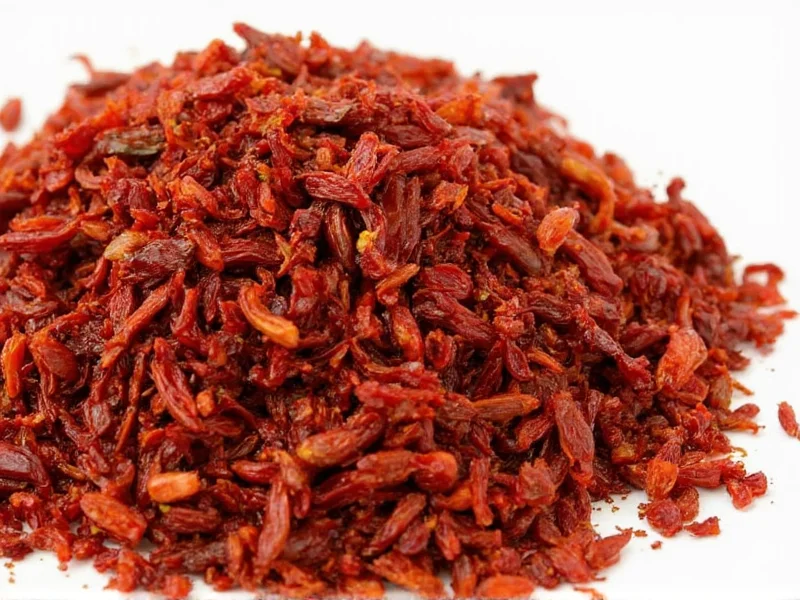When your recipe calls for dried ancho chilies but your pantry comes up empty, knowing reliable substitutes can save your Mexican or Southwestern dish. Ancho chilies—dried poblano peppers—offer a distinctive sweet, raisin-like flavor with mild heat (1,000-2,000 Scoville units) and subtle berry undertones. Understanding what makes them unique helps you select the most appropriate replacement without compromising your dish's authenticity.
Understanding Ancho Chili Characteristics
Dried anchos provide three essential elements to recipes: moderate heat, complex fruitiness, and earthy depth. They're foundational in mole sauces, adobos, and slow-cooked stews. Unlike hotter chilies, anchos contribute flavor without overwhelming spice, making them difficult to replace with single-attribute alternatives. The ideal substitute maintains this balance while matching the recipe's required texture—whether you need whole peppers for rehydrating or ground powder for seasoning.
Top Dried Ancho Chili Substitutes Ranked
Not all alternatives work equally well across recipes. Consider these options based on your specific cooking needs:
1. Guajillo Peppers (Best All-Around Substitute)
With comparable mild heat (2,500-5,000 Scoville) and bright, tangy fruitiness, guajillos mirror anchos' versatility. They lack anchos' chocolate notes but work perfectly in salsas, marinades, and sauces where acidity balances richness. Use a 1:1 ratio when substituting whole peppers. For dried ancho chili substitute in mole recipes, toast guajillos lightly to deepen their flavor profile.
2. Mulato Peppers (Closest Flavor Match)
Often called "ancho's cousin," mulatos are dried poblanos harvested at full maturity. They deliver anchos' signature raisin-like sweetness with added notes of tobacco and cocoa—ideal for authentic mole negro substitute solutions. Slightly hotter than anchos (2,500-3,000 Scoville), use 1 mulato for every 1.5 anchos to maintain heat balance.
3. Pasilla-Chile Powder Blend (Pantry-Friendly Option)
When whole peppers aren't available, combine 1 tsp pasilla powder (for fruitiness) with ½ tsp New Mexico chili powder (for earthiness) and a pinch of cocoa powder. This ancho chili powder substitute blend mimics the complex flavor in rubs and dry marinades. Avoid generic "chili powder" which often contains cumin and oregano that alter dish authenticity.
| Substitute | Ratio vs. Ancho | Best For | Flavor Adjustment Tips |
|---|---|---|---|
| Guajillo peppers | 1:1 whole | Salsas, adobos, marinades | Add ¼ tsp lime zest to compensate for missing berry notes |
| Mulato peppers | 1:1.5 whole | Mole sauces, braises | Soak in warm water with 1 tsp vinegar for brighter acidity |
| Pasilla/New Mexico blend | 1.5 tsp blend per pepper | Dry rubs, spice mixes | Mix with 1 tsp tomato paste for rehydrated pepper texture |
| Chipotle in adobo | 1 tbsp per pepper | Hearty stews, chili | Balance smokiness with 1 tsp honey to offset heat |
Specialized Substitutions by Recipe Type
Mole Sauce Applications
For traditional mole sauce ancho replacement, combine mulato and guajillo peppers (2:1 ratio) to replicate the layered fruit-chocolate profile. Skip cayenne or hotter chilies that would dominate the delicate sauce. If using powder substitutes, add 1 tsp unsweetened cocoa to restore depth lost in single-pepper alternatives.
Chili and Stew Recipes
In hearty dishes where anchos provide background warmth, chipotle peppers in adobo offer comparable depth with smokiness. Use 1 tablespoon minced chipotle per dried ancho, then reduce other spices by 25% since chipotles contain vinegar and garlic. This smoky ancho chili substitute for chili recipes works particularly well in Texas-style dishes.
Dry Rub and Spice Blend Uses
When anchos are called for as ground spice, avoid pre-mixed chili powders. Instead, create a custom blend: 2 parts sweet paprika, 1 part cumin, ½ part garlic powder, and a pinch of allspice. For ancho powder substitute in dry rubs, add 1 tsp instant espresso powder to mimic anchos' earthy notes without heat.
Avoiding Common Substitution Mistakes
Many home cooks make these critical errors when seeking dried ancho chili alternatives:
- Overcompensating for heat - Anchos are mild; using hotter peppers without ratio adjustments creates inedible dishes
- Ignoring rehydration needs - Whole pepper substitutes require the same 20-minute soak in hot water as anchos
- Mixing incompatible flavor profiles - Avoid citrus-forward chilies like aji amarillo in traditional Mexican dishes
- Using canned purees - Tomato-based purees alter texture and acidity in sensitive recipes like mole
Remember that no substitute perfectly replicates dried ancho chilies' unique balance. The key is matching your substitute to the recipe's dominant requirements—whether that's heat control, fruitiness, or earthy depth. For emergency dried ancho chili replacement in a pinch, combine equal parts sweet paprika and smoked paprika with a pinch of cinnamon.











 浙公网安备
33010002000092号
浙公网安备
33010002000092号 浙B2-20120091-4
浙B2-20120091-4